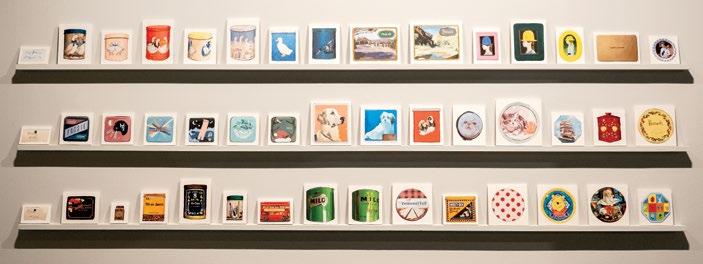
2 minute read
Jasmine Tea
Christina Chau
There is a neglected tin of Sunflower Jasmine Tea in my mother’s kitchen that has been sitting next to the kettle for decades. My mother drinks up to nine cups of English Breakfast tea a day, but rarely breaks out the jasmine unless prompted by someone else. I haven’t thought about the tin of Jasmine tea, until coming to The Alternative Archive exhibition and seeing one painted in Ellen Norrish’s Tin Heads. I realise now, that it’s likely that we’ve kept this tin for so long because it must have some significance in our family. The few objects that my mum has kept in the house post Mari Kondo and pre-downsizing includes a pepper mill that she stole from a restaurant in her twenties as a nursing student; a cabinet that my brother made in year 11 woodworking class; a rocking chair that she nursed her children in; and also this tin of jasmine tea. Surely it must be one of the few markers of my Dad’s presence in our past.
Advertisement
I can’t believe that I don’t know how it came into our home. Even though it’s one of the most common brands of Chinese tea, I’ve assumed all this time that it was bought and kept by my dad on our only family trip to Hong Kong when I was two – a sentimental connection to home while tucked away in Albany thousands of kilometres away. I assume, also, this is perhaps why we’ve painfully kept the tin and rarely drunk the tea: the tin must be a reminder to keep in touch with friends and family in Hong Kong even though Dad died over a decade ago, and he rarely connected with them anyway. A reminder of a broken lineage, and that any connection is now, and always was, up to us to make.
Not long ago I used to fly to Hong Kong twice a semester and teach media studies. This commute was also an opportunity to meet my extended family and get a crash course on our painful family history. Scanning over a map of Hong Kong and the surrounding archipelago I couldn’t help but notice that my name ‘Chau’ was written in English and used for ‘island’ on the map. My students politely explained ‘No Miss, it looks that way because of the translation, but ‘Chau’ does not mean ‘island’ in any way. ‘Chau’ is more like ‘Smith’ – it’s so common’.
Today that tin of jasmine tea still sits next to the kettle, two-thirds full. I told my mum that I was writing about a painting of a tin that looks exactly like ours and asked ‘what’s the story behind that tea, is it from Hong Kong? Did you buy it on a family holiday with dad?’. My mum replied, ‘There isn’t any story. I just bought it once when we were in Perth and we’ve kept it but we don’t drink the tea’.
Author’s note
Christina’s recent arts writing and criticism explores ways in which experiences of art can echo everyday domestic conversations, relationships, and gestures. Rather than thinking about art solely while one is within a gallery, Christina explores how experiencing art can make one rethink aspects of daily life. Ellen Norrish’s Tin Heads provided the perfect opportunity to explore themes of nostalgia, kitsch, memory, and home, and connect to her Cantonese heritage and rural Australian upbringing.
Christina Chau is a lecturer at Curtin University in the School of Media, Culture, Art & Social Inquiry. Her research focuses on experiments with art and technology, particularly in the areas of kineticism, interactivity, online visual culture, robotics, and drone performances; and her book is titled Movement, Time, Technology and Art (2017). She has also written for contemporary art publications including Art Collector, The Review Board, and unMagazine








